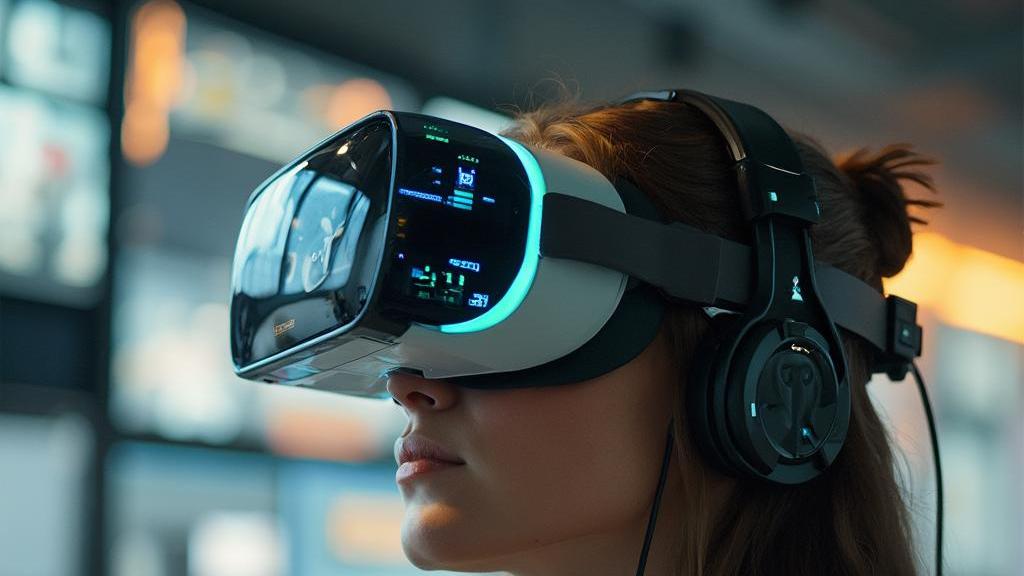Artificial reality and virtual reality are technologies revolutionizing how we interact with digital environments. Exploring their nuances reveals their immense potential and distinct applications.
Definition and Differences
Artificial reality (AR) and virtual reality (VR) are often used interchangeably, but they serve distinct purposes. AR overlays digital information onto the real world, enhancing our perception of reality. Examples include AR glasses and smartphone apps that provide real-time information about the environment. In contrast, VR immerses users in a completely digital environment, often through headsets. This immersion can be so complete that users feel like they are physically present in the virtual world.
The primary difference lies in how each technology interacts with the physical world. AR augments the real world, blending digital elements with the physical environment. This integration allows for a more interactive experience, where users can see and interact with digital content while still perceiving their actual surroundings. VR, on the other hand, creates an entirely new environment, isolating users from the real world to provide a fully immersive digital experience. This distinction is crucial for understanding their applications and use cases, which will be explored in the next section.
Both technologies rely on advanced software and hardware to function effectively. AR typically uses cameras, sensors, and displays to overlay digital information onto the real world. VR requires high-resolution displays, motion tracking, and often haptic feedback to create a convincing virtual environment. The complexity of these systems highlights the importance of software vulnerability and mitigation strategies in ensuring their security and reliability.
Applications and Use Cases
AR and VR have a wide range of applications. AR is used in retail for virtual try-ons, allowing customers to see how items look on them before purchasing. This enhances the shopping experience and reduces return rates. In healthcare, AR assists in augmented surgeries, providing doctors with real-time data and visual aids. This improves precision and patient outcomes. Education benefits from AR through interactive learning experiences, making complex topics more engaging and easier to understand. Software development also leverages AR for debugging and visualizing code in real-time. VR is popular in gaming for immersive experiences, allowing players to fully engage in virtual worlds. In real estate, VR enables virtual tours, helping potential buyers explore properties from anywhere. Therapy uses VR for exposure treatments, creating controlled environments to help patients overcome phobias and anxiety. Both technologies are increasingly being used in professional training and remote collaboration. For instance, VR simulates real-life scenarios for training purposes, while AR enhances remote collaboration by overlaying information during virtual meetings. These applications make AR and VR essential tools in various industries.
Benefits and Challenges
The benefits of AR and VR are numerous. AR enhances real-world interactions, making tasks more efficient and engaging. For instance, AR can be used in healthcare for augmented surgeries, providing doctors with real-time information during procedures. VR provides immersive experiences that can be used for education, entertainment, and therapy. In therapy, VR can create controlled environments for exposure treatments, helping individuals overcome phobias and anxieties. However, both technologies face challenges such as high costs, technical complexities, and potential health risks. Addressing these challenges requires ongoing research and development. High costs can be a barrier to widespread adoption, especially in fields like education and healthcare. Technical complexities include the need for advanced hardware and software, which can be difficult to integrate into existing systems. Potential health risks, such as motion sickness and eye strain, also need to be considered. As AR and VR become more integrated into various industries, it is crucial to focus on security and reliability. This ensures that these technologies can be implemented safely and effectively.
Implementation and Security
Implementing AR and VR requires robust infrastructure and security measures. Cloud infrastructure configuration and management are crucial for delivering seamless digital experiences. Vulnerability assessment is essential to identify and mitigate potential threats. Regular digital security audits ensure that AR and VR solutions remain secure and reliable. Ensuring robust security involves implementing advanced cybersecurity strategies and best practices. For instance, managing your digital footprint is vital to protect sensitive data. Enhancing network security is another critical aspect that ensures the integrity of AR and VR systems. Digital security audits also play a pivotal role in identifying and addressing vulnerabilities, as outlined in this guide. By leveraging expertise in these areas, you can create immersive digital experiences without compromising on security.
Final words
Artificial reality and virtual reality offer vast potential in enhancing digital interactions. By understanding their differences and leveraging their benefits, we can create more immersive and secure digital experiences. Our services in web design, web hosting, DNS management, cloud infrastructure configuration and management, vulnerability assessment, digital security audit, and managed cloud services at a low price can help you achieve this seamlessly. To get started, log in to our portal.














Leave a Reply